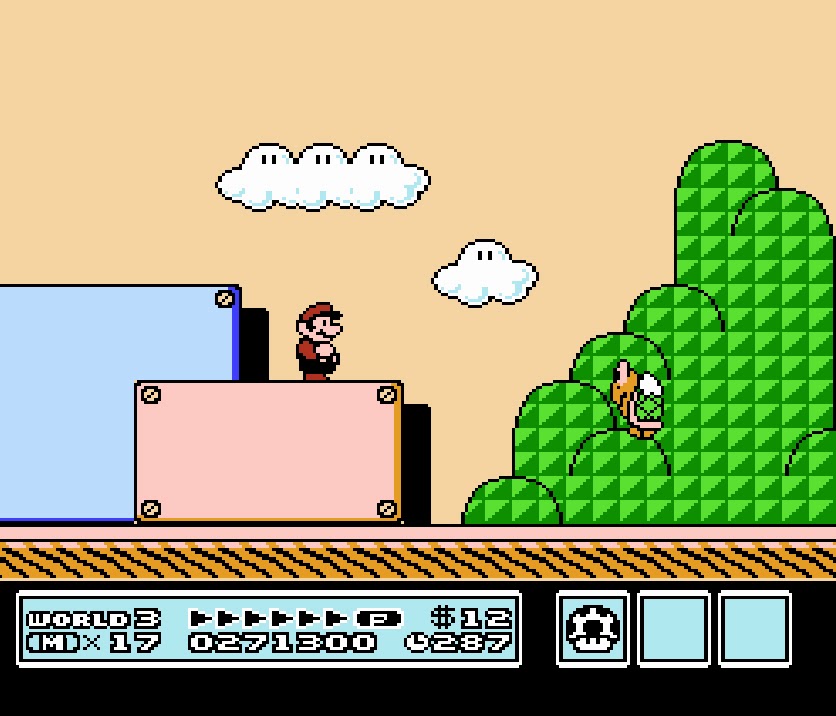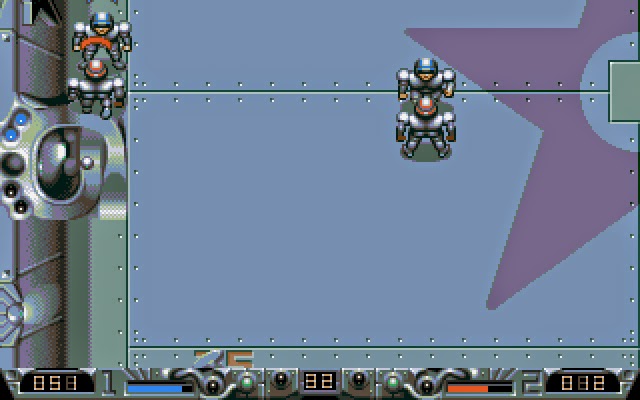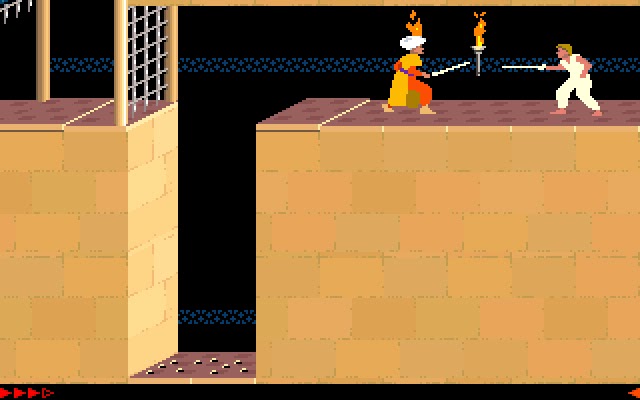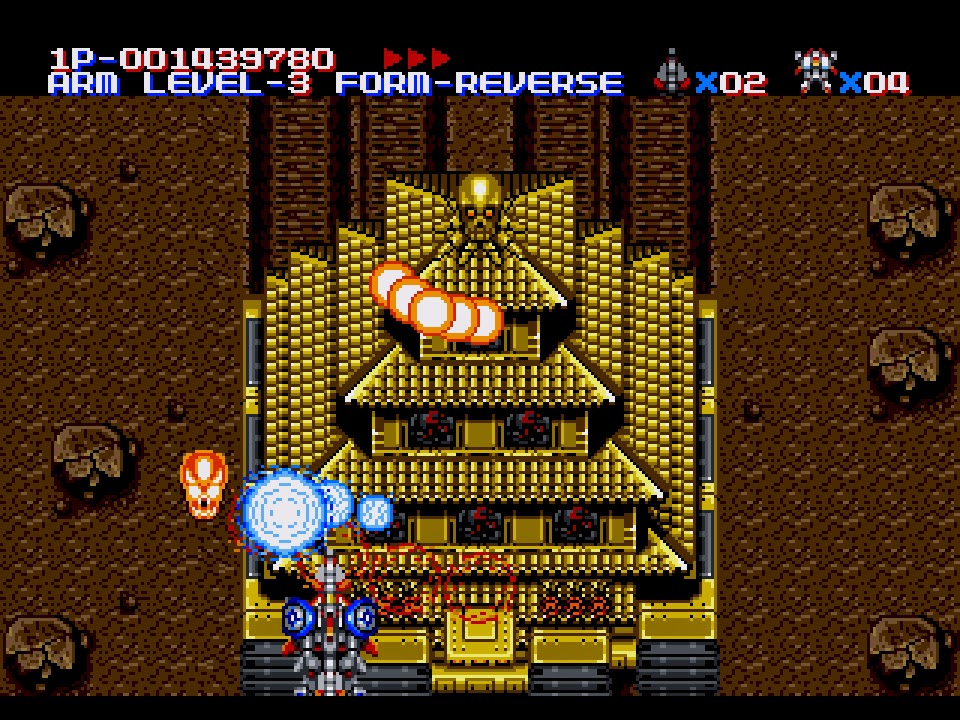After going off at a bit of a tangent in Super Mario Bros. 2, the portly plumber is back in his old stomping ground of Mushroom World. Bowser has also made a return, this time with his seven children in tow. These siblings have stolen the royal magic wands from each kingdom in the Mushroom World and have used them to turn the kings into animals. Lord knows what Mrs Bowser makes of this. You take control of Mario (or Luigi in two player mode) and must retrieve the wands from Bowser's offspring in order to return the kings to their human forms.
The gameplay in Super Mario Bros. 3 has been changed from a standard linear platforming game to something a little bit different. Each kingdom is displayed from above and Mario can only travel on the roads. On this map there are several standard platform levels to play through and mini games to participate in. Depending on the road layout most of the levels are compulsory but some are optional and can be skipped altogether. The mini games can also be skipped, but can give up rewards with little or no risk.
 |
| Desert Land. I have only skipped platform level 5. |
Examples of mini games include a reaction test to line up a picture, matching pairs of cards, or defeating the wandering 'Hammer Brothers' for a treasure chest. A treasure chest can also be opened in Toad's house. Items from the chests can be used at the beginning of a platform level to make things a little easier or, in the case of Jugem's Cloud, complete it without playing it.
 |
| The non-platform levels can give up extra lives and useful items |
The meat of the game is the platforming levels. These are more or less the same as the original game but Mario has been given more power ups. The Super Mushroom (changes Mario into the larger Super Mario), Starman (bestows invincibility for a short while) and Fire Flower (allows Mario to throw fireballs) all return from Super Mario Bros. New to this game are the Frog Suit, Racoon Suit and Tanooki Suit (a tanuki is a japanese racoon). Frog Mario can jump further on land and swim better making the underwater sections much easier. Racoon Mario and Tanooki Mario can fly for a limited time and can use a tail attack to dispatch enemies. Additionally Tanooki Mario can turn into a statue for a short while and cannot be harmed. As per Super Mario Bros., enemies can be killed by jumping on them or hitting them from below if they are on a platform. At the end of each platform level Mario picks up a card. Collect two or more the same and you are rewarded with extra lives. An extra life is also awarded for every 100 coins collected.
 |
| Picking up three identical cards provides some handy extra lives. |
Lives are lost if you fall down a hole or into fire, or if you run out of time. If you come into contact with an enemy when wearing a suit, you revert to Super Mario. If you're Super Mario and you are touched you turn into ordinary Mario. You lose a life if you touch an opponent when you are ordinary Mario.
The aim in each kingdom it to reach the fortress. In the fortress you will need to retrieve the magic wand from one of Bowser's kids by jumping on his head three times. The wand can be used to return the King to human form.
You will then get a letter and gift from Princess Peach and then it's off to the next kingdom.
Super Mario Bros. 3 has often been cited as being the best game on the NES and one of the best games of all time. Although it adds a lot of new elements to the Super Mario Bros. formula, the platforming gameplay and graphics remain pretty much the same as the 1985 release. I also prefer the flatter learning curve of the original title. Although it hands out a lot of extra lives, Super Mario Bros. 3 gets very difficult during the third world and it would take a lot of time to learn all the levels. Another problem for me is that I imagine the game would take at least a couple of hours to complete and, with no save option, would have to be done in one sitting. Is it the best game on the NES? Well, in my opinion that would be Earthbound Zero and I don't think this title is as impressive in 1990 as Super Mario Bros. was half a decade earlier. It's a cracking game though not quite as good as I was expecting.
 |
| The frog suit makes traversing the water levels a lot easier. |
















































